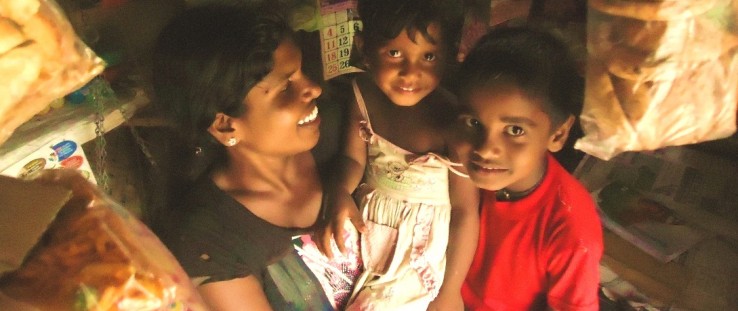 A USAID/Save the Children initiative has helped thousands of mothers like this one avoid being separated from their children.
Save the Children
A USAID/Save the Children initiative has helped thousands of mothers like this one avoid being separated from their children.
Save the Children
 A USAID/Save the Children initiative has helped thousands of mothers like this one avoid being separated from their children.
Save the Children
A USAID/Save the Children initiative has helped thousands of mothers like this one avoid being separated from their children.
Save the Children
Eighteen-year-old Rooban, 13-year old Ruwani and 12-year old Nimali* resemble ordinary children in Sri Lanka, longing for love and care, rooting for their favorite sports teams, and looking forward to their futures. But these children have one thing in common: Their childhood dreams have been marred by poverty, violence, abuse, family separation and child labor.
And one more thing: They overcame the obstacles that life put in their paths. A USAID project helped them navigate their treacherous journeys.
In Sri Lanka, like many other countries around the world, families are often forced to give up their children to children’s homes because they cannot feed, educate or clothe them. The combination of the effects of the 26-year civil war and the December 2004 tsunami in Sri Lanka also left thousands of children orphaned and destroyed the livelihoods of many families.
Although Sri Lanka was recently declared a middle-income country, the situation has not improved for some of the island’s children; the number of institutionalized children or those at risk of institutionalization is on the rise. At least 13,200 children currently live in 341 registered orphanages and thousands of others are at risk of being placed in one.
Between 2011 and 2014, USAID partnered with several Sri Lankan Government agencies and Save the Children to prevent nearly 12,000 children from family separation, reunite 2,000 already in orphanages with their families, and provide safe and secure foster care to an additional 2,000 children.
For the past 10 years, through its Displaced Children and Orphans Fund, USAID helped strengthen child protection systems and government support mechanisms, trained child protection and judicial officers, and assisted vulnerable children who have been subjected to abuse, violence, exploitation and neglect. This initiative provided bicycles, school uniforms, educational supplies, shoes and hygiene kits to improve child and infant health. It also provided families, especially those headed by war widows, with livelihood and housing assistance and skills training.
“Sri Lankan society is culturally inculcated to treat children as treasures,” says Ivan Rasiah, a program management specialist at USAID’s mission in Sri Lanka who has been managing this initiative since its inception. “In this backdrop, the country has committed itself to prioritize family- and community-care for its younger generations, creating an ideal opportunity for USAID to partner with the Government of Sri Lanka, local communities and Save the Children to strengthen systems to protect children affected by violence and conflict from further harm, facilitate access to civil society and governmental support, mobilize community to protect children without adequate parental care, and support them to live happy childhoods in family environments.”
A Tough Start in Life
When Rooban was 9, his father died, leaving behind Rooban’s mother—who had no education—to care for him and his sister, who by then was also a young widow with a toddler. The family had no assets or savings, so Rooban’s mother, Arasammah, started to work as a seasonal laborer in the rice paddy fields.
To supplement her income, she also sold firewood. But she still could not make ends meet. So she made the heart wrenching decision to send Rooban to a children’s home. The USAID-supported Child Protection Group (CPG) in the village was made aware of her situation and, as a result, Rooban did not end up in the children’s home.
“They not only visited us to explain the importance of parental care and the support of growing up in a family environment, but also financed a small grocery and trained me to run it,” said Arasammah, 49.
The grocery earned a little over $10 a day and with that she paid for the family’s expenses, including Rooban’s education. The CPG also recognized Rooban’s leadership skills and helped him become a part of the village Children’s Club, where children come together to interact with one another, learn new skills, hone their talents (such as artistic, literary or athletic), and develop their leadership abilities.
Rooban recently earned admission to a state university. “He will study to become an engineer, and that has been his childhood dream,” said Arasammah.
Like Rooban, Ruwani also received assistance from a CPG close to her grandparents’ house in northern Sri Lanka. As a toddler she was re-located multiple times as her family fled the civil war. When she was 11, her father was arrested for murder, after which her mother remarried and moved out with her new husband, leaving behind Ruwani to care for herself and her two younger siblings. With no other choice, Ruwani and her siblings moved in with their aged grandparents.
To provide for his new family, Ruwani’s grandfather was forced to return to farming, but suffered from severe hypertension and had to quit. Without the ability to cover expenses, Ruwani and her two siblings dropped out of school. The local CPG reviewed Ruwani’s case and referred her to the USAID-Save the Children initiative.
As a result, Ruwani and her siblings received school supplies and the family received training to start poultry farming. Ruwani’s grades have improved significantly and she is now a student leader in her school. She has also started showing interest in sports and participates in the village Children’s Club.
“I never thought I would recover from life’s blows at this young age. The CPG and Children’s Club members have played a big part in my recovery,” said Ruwani.
Ending the Heartbreak
The migration of many of Sri Lanka’s poorest parents—especially mothers who are leaving to work in the Middle East as domestic help—continues to be one of the underlying causes for children’s vulnerabilities. The civil war created thousands of war widows; there are around 89,000 in the former conflict zones alone. These mothers are caught in a web of debt, post-war social issues and limited employment opportunities. Often, the only way they can secure some support for their children is by giving them up and sending them to children’s homes.
Research has found that institutionalization negatively affects a child’s physical and mental development and hampers educational advancement. Many child protection activists also question the use of residential institutions for children, which are often unregulated and fail to provide a safe, clean, healthy environment for children to thrive. They advocate instead for support for families to prevent unnecessary separation and alternative family-based placements for children who shouldn’t remain in an unacceptable family situation, which is in keeping with the U.S. Government’s Action Plan on Children in Adversity.
A significant component of the USAID initiative was forming more than 300 CPGs in villages where local communities worked alongside government officials to identify vulnerable children. The project worked to raise awareness of children’s protection issues, recommend action when necessary, respond with required and appropriate protection measures, and then either monitor or refer cases to probation officers, child rights officers, the National Child Authority or local NGOs for further support.
USAID also trained CPG members, mostly village religious and community leaders. From 2011 to 2014, these CPGs responded to nearly 8,000 child protection cases, which included children at risk of or subjected to neglect, violence, abuse, exploitation, narcotics or alcohol use, or school dropouts.
In one instance, in a village in northern Sri Lanka, a CPG helped establish a clinic for pregnant and lactating mothers. In another, a CPG in a village where fatal rail accidents have taken place frequently successfully advocated for a railway safety gate.
The project ended in November 2014 with more than 100 Children’s Clubs throughout Sri Lanka. These clubs raised local awareness of early marriages and child labor; organized exhibitions on environmental protection; supported programs on good health, hygiene practices and child safety; established Children’s Clubs in neighboring villages; identified cases of child abuse for referral; and conducted home visits to increase child participation in activities sponsored by Children’s Clubs.
“CPGs have dramatically improved child protection. Children are very keen to engage in Children’s Club activities. These have been so successful that CPGs were also formed in areas outside of the locations identified under the initiative. And we see this as an important outcome of the USAID-Save the Children project,” said P.S.M. Charles, a government agent in Sri Lanka’s Eastern province.
Officials say USAID’s approach of holistic support to children and their families along with the shift in attitude in the community has helped to successfully reunite thousands of children with their families and prevent family separation.
Just like for 12-year-old Nimali, whose father left the family when her mother was six months pregnant with her. As a result, Nimali’s mother, Punithavathy, lived a hand-to-mouth existence with the meager income she earned making rice noodles and products from local palm trees. She was able to get the local courts to grant her a welfare allowance of about $20 a month.
However, when the small family business started to run at a loss, Nimali’s mother saw no other options, and made the decision to send Nimali to a local children’s home. Nimali refused vehemently and it broke her mother’s heart.
But Nimali did not have to stay long in the orphanage. After learning about the situation, the probation officer referred Punithavathy to a local partner of the initiative, who intervened and provided immediate financial assistance to restart her food business, adding a rice flour product to increase the business’ income. The business now earns the family around $65 a month—enough for mother and daughter to stay together.
“Nimali’s grades have picked up after moving back in with me. I also send her for extra lessons when I can. In the last exam, she scored high marks for all subjects and was ranked second in her class of 45 students. We are back together, and this is what we have always treasured and longed for,” said Nimali’s mother.
*Names have been changed to protect identities of beneficiaries.







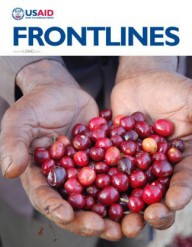

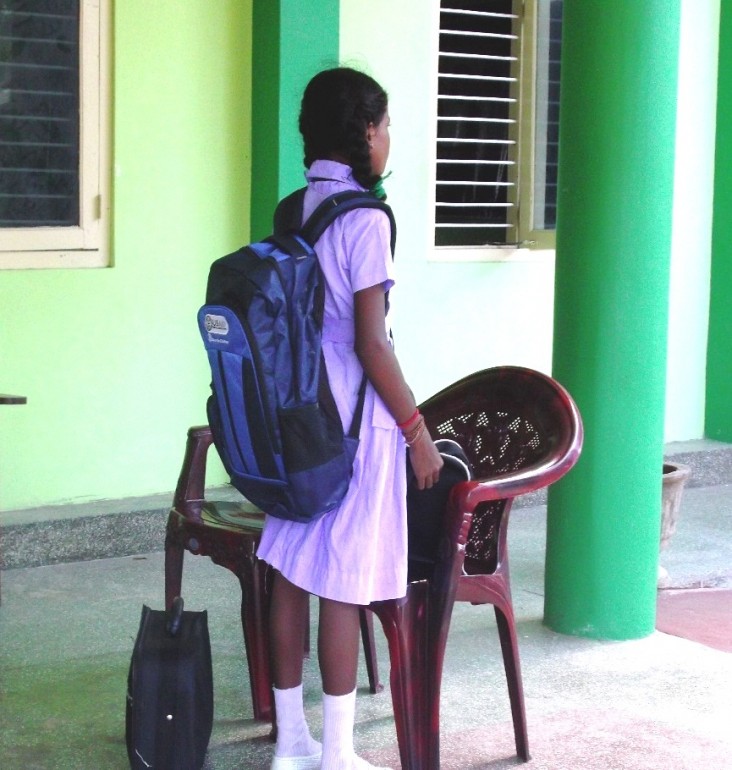
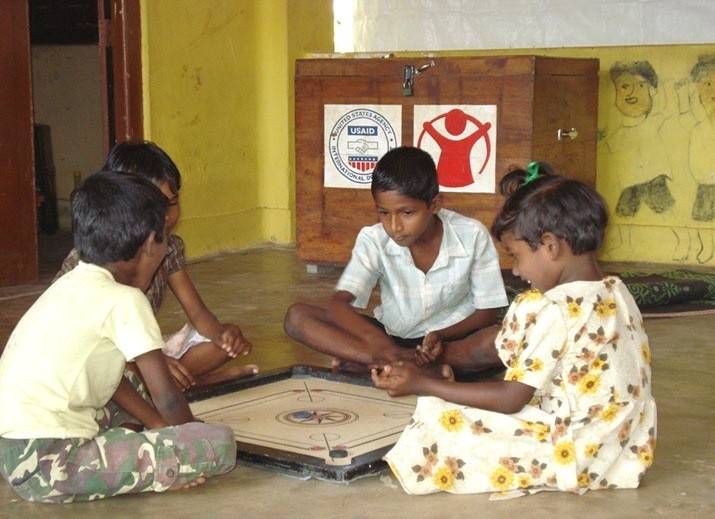
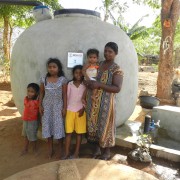
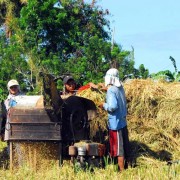
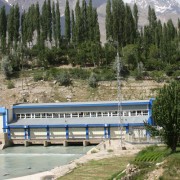
Comment
Make a general inquiry or suggest an improvement.